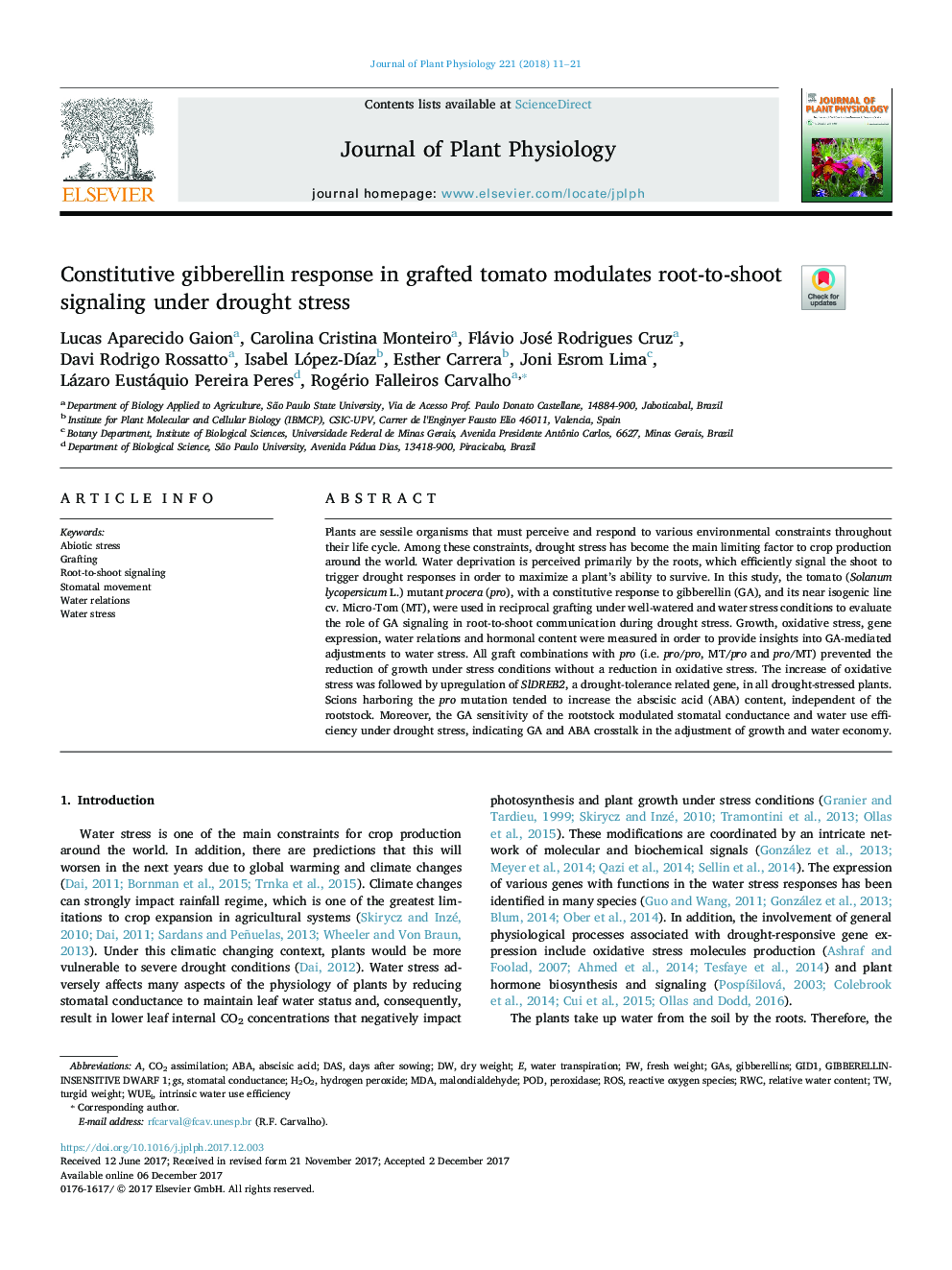| Article ID | Journal | Published Year | Pages | File Type |
|---|---|---|---|---|
| 8386960 | Journal of Plant Physiology | 2018 | 11 Pages |
Abstract
Plants are sessile organisms that must perceive and respond to various environmental constraints throughout their life cycle. Among these constraints, drought stress has become the main limiting factor to crop production around the world. Water deprivation is perceived primarily by the roots, which efficiently signal the shoot to trigger drought responses in order to maximize a plant's ability to survive. In this study, the tomato (Solanum lycopersicum L.) mutant procera (pro), with a constitutive response to gibberellin (GA), and its near isogenic line cv. Micro-Tom (MT), were used in reciprocal grafting under well-watered and water stress conditions to evaluate the role of GA signaling in root-to-shoot communication during drought stress. Growth, oxidative stress, gene expression, water relations and hormonal content were measured in order to provide insights into GA-mediated adjustments to water stress. All graft combinations with pro (i.e. pro/pro, MT/pro and pro/MT) prevented the reduction of growth under stress conditions without a reduction in oxidative stress. The increase of oxidative stress was followed by upregulation of SlDREB2, a drought-tolerance related gene, in all drought-stressed plants. Scions harboring the pro mutation tended to increase the abscisic acid (ABA) content, independent of the rootstock. Moreover, the GA sensitivity of the rootstock modulated stomatal conductance and water use efficiency under drought stress, indicating GA and ABA crosstalk in the adjustment of growth and water economy.
Keywords
DASGID1WUEiMDARWCABAPODROSHydrogen peroxideAbiotic stressabscisic acidWater stressCO2 assimilationStomatal movementIntrinsic water use efficiencyWater relationsdays after sowingmalondialdehydeRelative water contentStomatal conductanceH2O2turgid weightfresh weightdry weightPeroxidaseGraftingGasReactive oxygen speciesGibberellins
Related Topics
Life Sciences
Agricultural and Biological Sciences
Agronomy and Crop Science
Authors
Lucas Aparecido Gaion, Carolina Cristina Monteiro, Flávio José Rodrigues Cruz, Davi Rodrigo Rossatto, Isabel López-DÃaz, Esther Carrera, Joni Esrom Lima, Lázaro Eustáquio Pereira Peres, Rogério Falleiros Carvalho,
